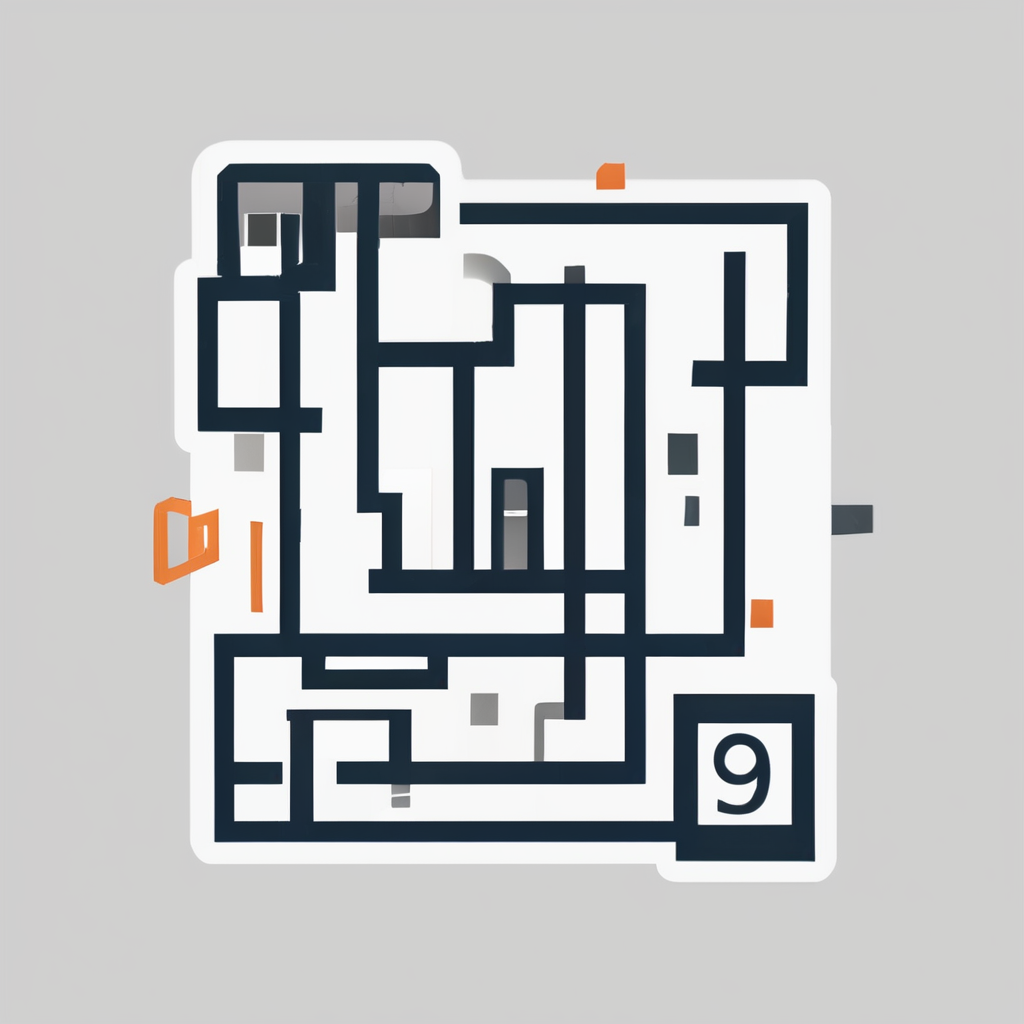Overview of Current Home Interior Trends in the UK
The latest home interior trends in the UK are heavily influenced by a blend of innovation and tradition, combining contemporary styles with classic elements. The UK interior design scene is presently characterised by a few key movements. Notably, there has been a significant shift towards eco-friendly and sustainable materials, reflecting a broader societal concern for the environment. This movement is not only a conscious choice but also a stylish one, as more designers incorporate repurposed materials and energy-efficient designs into their projects.
Cultural influences have also significantly impacted these trends. In particular, there’s a noticeable global infusion in design aesthetics, with UK homes showcasing elements inspired by Scandinavian minimalism and Japanese simplicity. These influences promote a sense of calm and clarity, appealing to those seeking respite from the hustle and bustle of everyday life.
In the same genre : How can you choose the perfect lighting for a UK home interior?
Research on the current interior landscape reveals that consumers lean towards contemporary styles that offer both functionality and aesthetic appeal. According to a recent survey, approximately 65% of UK homeowners prefer minimalistic designs that make use of natural light and open spaces. Additionally, eclectic interiors, which allow for personal expression through a mix of styles and eras, are becoming increasingly popular.
While modern design seems to be in the lead, traditional decor still holds a special place in UK homes, especially in regions where historical architecture is prevalent. Overall, the fusion of different design philosophies reflects a desire for personalised spaces that cater to individual tastes while embracing broader design trends.
Additional reading : Understanding the Benefits of Smart Home Technology in the UK
Popular Design Styles
In UK interior design, distinct design styles are emerging that capture the essence of modern aesthetics while paying homage to tradition. As eclectic interiors gain traction for their ability to blend various eras and styles, the landscape of home decor continues to evolve.
Minimalism
Minimalism prioritizes simplicity, focusing on clean lines and eliminating clutter to create serene, open spaces. This style centres around functionality and highlights essentials by stripping down to the bare minimum. Combining neutral tones and natural lighting, minimalism suits those who enjoy a tranquil environment, free from unnecessary distractions.
Maximalism
In stark contrast, maximalism embraces bold choices, inviting an abundance of colour, pattern, and texture into the home. This style speaks to those who prefer expressive environments that reflect personal taste and a collection of life experiences. Statement pieces and richly decorated spaces define maximalism, making it a compelling choice for vibrant personalities.
Industrial Style
Inspired by urban lofts, the industrial style features raw materials like exposed brick, metal, and concrete. This approach leans on practicality, aesthetic honesty, and a utilitarian outlook, making a statement in contemporary style settings. It’s widely appreciated for its rugged charm and the ability to adapt to eclectic interiors. Rich in character, industrial elements can transform modern homes into visually captivating spaces.
Trending Color Palettes
Trends in colour palettes for UK interiors indicate a dynamic interplay between neutral tones and vivid hues. Neutral shades like soft greys, warm beiges, and earthy browns remain staples for those favouring understated elegance. These tones promote serenity and timelessness, offering canvases adaptable to various styles. Bold colours, by contrast, are employed as dramatic accents, with jewel tones and rich blues making bold statements in decor.
The psychological impact of colour cannot be underestimated; it significantly affects mood and atmosphere. Cool blue hues often evoke calmness and focus, ideal for bedrooms and studies. Conversely, warmer tones like reds and oranges stimulate energy and conversation, making them perfect for social spaces.
Seasonally, UK interiors witness shifts in colour trends. Autumn often sees deeper colours like burgundy and forest green, while spring welcomes fresh, vibrant shades such as pastel pinks and soft yellows. This seasonal variation allows homeowners to infuse freshness and alignment with the natural world in their living spaces.
In essence, the choice of trending UK interior colours provides both aesthetic value and emotional resonance, enabling homeowners to create spaces that reflect personal mood and style.
Materials and Textures on the Rise
The focus on sustainable materials is reshaping the landscape of UK interior design, as more homeowners prioritize both environmental impact and aesthetic appeal. Driving this trend is a desire for authenticity, with natural materials such as wood, stone, and wool becoming increasingly popular. These materials not only offer unique textures but also introduce a sense of warmth and organic beauty to living spaces.
Natural Materials
Natural materials continue to dominate the UK interior design scene. Wood, in particular, is celebrated for its versatility and timelessness. Whether in flooring, furniture, or accent elements, its varied finishes add character and depth. Stone, similarly, enhances spaces with its durability and earthy appeal, often used in kitchens and bathrooms. Embracing these materials allows homeowners to connect with nature, fostering a calming environment.
Innovative Finishes
Beyond traditional options, innovative finishes are gaining traction. Contemporary style decorators now incorporate reclaimed materials, turning sustainability into a chic statement. Repurposing old wood or metal provides a rustic charm, while also serving as a conversation starter about environmental accountability. Additionally, new finishes such as concrete-effect paints offer an industrial edge, allowing for a bold, modern appearance without the extensive refurbishment.
Sustainable Options
Sustainability extends to innovative textiles and composites that mimic natural textures. These eco-friendly options offer stylish solutions and lower carbon footprints. For instance, bamboo and cork are celebrated for their rapid renewability and adaptability in design applications. These materials complement diverse texture trends, ensuring that eco-conscious choices are both practical and on-trend.
In summary, the emphasis on home materials with tactile appeal and environmental benefits marks a progressive movement in interior design. By integrating these trending textures, homeowners can achieve stylish interiors that reflect both personal taste and broader ecological awareness.
Furniture Choices and Layouts
The latest trends in furniture design are redefining how UK homeowners approach their interior spaces. As contemporary lifestyle demands evolve, flexible spaces and multifunctional furniture have gained prominence in home layouts. This shift reflects a growing need for adaptability, especially in urban settings where space is often limited.
Modern furniture designs prioritize functionality without compromising aesthetic appeal. Pieces such as extendable dining tables and foldable desks facilitate versatile home environments, enabling spaces to transition smoothly between different uses. Incorporating storage solutions like ottomans with hidden compartments or modular shelving units maximizes efficiency and reduces clutter, a key element in contemporary style.
Layouts play a crucial role in optimizing space and improving flow within a home. Open-plan arrangements are favoured for enhancing natural light and creating airy environments. These configurations encourage social interaction and connectivity, catering to lifestyles where living, dining, and working areas harmoniously coexist.
For various rooms, there are specific tips to achieve an effective home layout. In living rooms, arranging furniture around a focal point such as a fireplace or a vista can create inviting spaces. Bedrooms benefit from a balance between storage and relaxation, with bespoke wardrobes offering tailored organizational solutions. Kitchens increasingly incorporate islands that serve as multifunctional hubs for cooking and entertaining.
By embracing furniture trends that emphasize innovation and practicality, homeowners can achieve an optimal blend of functionality and style, reflecting the dynamic nature of modern UK interior design.
Expert Insights and Opinions
Exploring the latest interior design trends in the UK reveals fascinating insights from industry experts. Their views highlight how dynamic and varied UK interior design has become over recent years, driven by both contemporary styles and traditional influences.
Insights from Design Professionals
Leading interior design experts emphasize the importance of integrating both modern design and historical elements. According to Sarah Fogg, a well-regarded designer, the current trend leans towards creating personalized spaces that reflect the homeowner’s identity while incorporating global influences. This approach satisfies the growing consumer preference for eclectic interiors, mixing era-defining pieces with modern staples to achieve a harmonious balance.
Industry Trends and Predictions
Professionals predict that traditional decor will retain its appeal, particularly in homes with historical architecture, while innovations in materials and technology are set to change the playing field. Designer Tom Rainey suggests that as the thirst for eco-friendly living grows, so too does the impact of sustainable materials and energy-efficient features on the market. This drive for sustainable design solutions is expected to lead to further developments in material technology and aesthetics.
Future Directions
The future of interior design appears to be one of abundant creativity and adaptability. Experts forecast increased emphasis on intelligent designs and technology integration into home environments, propelling them into a new era of convenience and style. As consumers continue to show interest in both contemporary styles and environmentally conscious choices, the landscape is expected to evolve further, offering innovative solutions and personalized experiences to meet diverse consumer needs.
Tips for Implementation
Implementing the latest home interior trends can seem overwhelming, but with the right approach, transforming your space can be both enjoyable and rewarding. Here are some practical home decor tips to guide you:
Budget-Friendly Updates
Revamping your home doesn’t have to break the bank. One of the easiest ways to refresh a space is through low-cost DIY trends like painting walls or updating hardware on cabinets for an instant facelift. Consider adding or switching out decorative elements such as throw pillows, rugs, and curtains, which can dramatically alter a room’s atmosphere without a massive investment.
Using Textiles for Easy Transformation
Textiles offer a straightforward method for updating a room’s feel. Experimenting with patterns and texture trends can redefine an area effortlessly. Upholstering old furniture with new fabric or layering different materials like wool and linen can add depth and interest. Textiles also provide an opportunity to introduce trending shades and color trends, altering a room’s palette seasonally for a fresh and modern look.
Incorporating Technology in Design
As technology evolves, its integration in home interiors is becoming more prevalent. Smart home devices can enhance both convenience and efficiency. Consider installing smart lighting, thermostats, or security systems that can be controlled via your phone. This not only adds a high-tech touch to your home but also optimizes its functionality. Additionally, incorporating tech-friendly furniture with built-in charging stations or Bluetooth capabilities can make your living space more adaptable to contemporary needs.
By following these tips, you can implement the latest trends in UK interior design effectively. Whether through DIY trends or sophisticated tech additions, these strategies ensure your home remains stylish and versatile.





